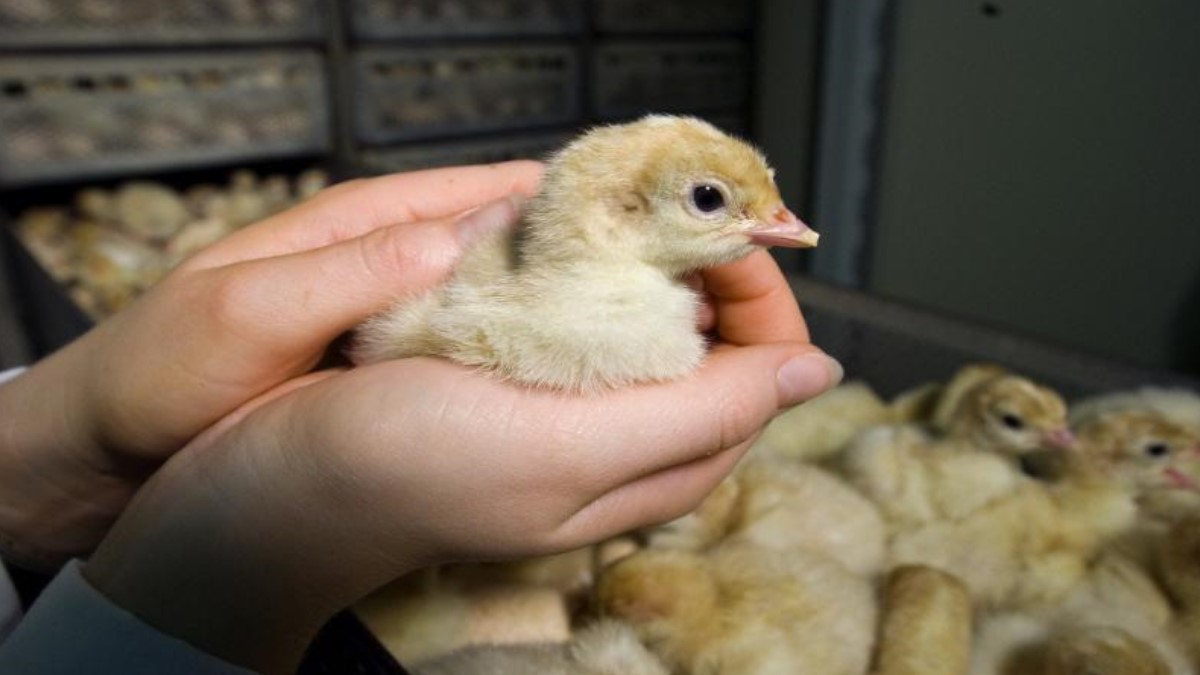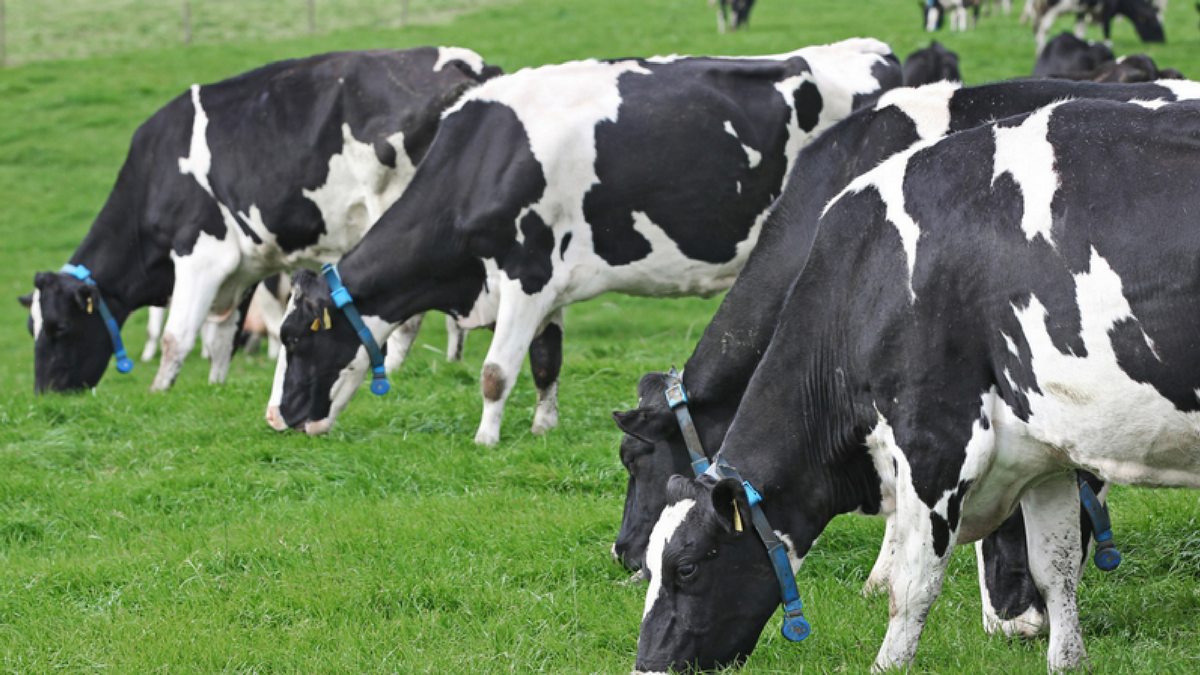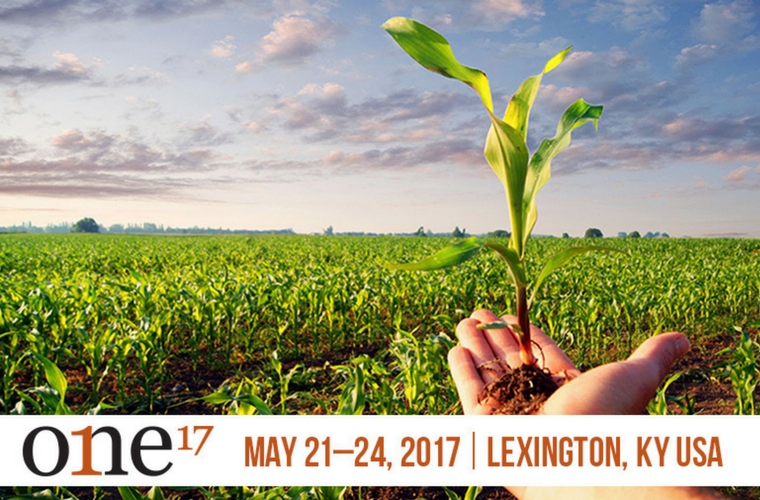An interview with David Hunt
The following is an edited transcript of our interview with David Hunt, CEO and co-founder of Cainthus. Cainthus is a machine-vision company specializing in health analytics for crop and livestock.
Tell us a little bit about why digitizing agriculture is important and what the potential is.
How we got into all of this is, we looked at what was going on in the agriculture world. My brother and I got extremely concerned about how, if we keep on farming in our “green revolution” style agriculture of monocultures plus chemical input, we are effectively going to kill our planet. We realized that we need to make things far more efficient, and farm in more environmentally friendly ways, in order to stave off what currently looks like an inevitability at the moment.
We then said, “What’s the best way to go about doing this?” Despite coming from an agriculture background, I didn’t realize the sheer absence of measurement that was at the commercial field or commercial livestock level. We realized if you want to improve agriculture, first of all you need to start measuring things. Then, once you can measure things, you can work out how to improve them and then ultimately that will hopefully lead to a better system.
I am very much a science fiction fan, and one of the things that always excited me as a child was the concept of robots working in farms and fields. When we started out on this journey, it was all toward the view of what we needed to do to get robots into our fields. One of the things we found out was, a robot is actually only as good as the data that feeds it. If you have an absence of data and an absence of measurement in agriculture, then the robots are never going to be there.
My personal opinion is, we will never be able to move away from monocultures until we have on-demand precision harvesting, which probably needs to be performed by robots, given the cost in increased human labor. When we went looking at what was the best way to systematically capture commercial field scale data in a manner that would be affordable to the farmer, we couldn’t get beyond the fact that digital imaging was going to be the way to do it. Camera technology is increasing at an exponential level at the moment. We only just got HD TVs and they are talking about 4K TVs, ultra HD, 8K TVs, etc. It’s that technology, and how cheap it is becoming, that’s enabling us to use drones to get highly precise images of what’s going on in our fields, far beyond the capability of what we can see with the human eye. One of the big concepts that I think people on farms need to understand, particularly crop farms, when it comes to drones: The drone is incidental and is simply the best current delivery device we have for getting one centimeter per pixel resolution, which is the minimum requirement in my opinion to spot what’s going on in a farm.
Tell me about some of the ways that you want to take that visual information. What would be the practical application? What are some of the things you have in mind?
Stand counts are something very useful we can do today. One of the biggest decisions a farmer makes every year is when they plant a field and the crops start emerging. If areas in the field do not emerge, well, what do I do about it? When you can count every individual plant in a field, you can make a data-driven decision as to whether it makes financial sense to re-sow or simply do nothing. I know enough farmers to know how difficult it is for a farmer to sit on their hands and do nothing when they are looking at a big bare patch in the middle of their field. Financially speaking, when it comes to your profit margin, it may actually be the best decision to simply do nothing. Introducing data-driven decision to agriculture, via increased digital measurement, is what enables you to do things like that.
Another application we have: Crop maturity analytics is something we can do today. The whole point of that is, when you ask farmers when they harvest their fields, it is generally they are afraid of bad weather coming, so they are going to harvest before the bad weather. If they see the neighbor out or the local agronomist tells them to do it, very little of it is based on data. I heard Aidan Connolly make a great point that today we farm based on what we see happening in our fields or what we see happening with our animals. Increasingly, as agriculture becomes more digitized, we are going to start farming data. We will look at what the data feedback is coming off our farm, and we will be making decisions on our farming activity based on that.
You talked about the importance of getting to a sustainable form of agriculture. What are some of the problems that we have, the way we are farming currently? What’s the potential risk for not dealing with it?
The potential risk of not dealing with it is our planet dies. That doesn’t mean humans will go extinct or anything like that; it just means that this planet won’t be a very nice place to live. Elon Musk is doing everything he can to get to Mars, but I’m not sure that’s going to be much nicer.
When we look at the principal risks that can be dealt with by using digital technologies, number one is our out-of-control nitrogen cycle. Currently, we are spending $140 billion dollars annually on nitrogen fertilizer. Depending on the target plant, 17 to 26 percent of that is being used by the target plant and the rest is being taken up by weeds, getting locked into the soil, or going as runoff into our waterways. We have an inefficiency loop in terms of our nitrogen fertilizer. The difficulty with that in terms of an environmental perspective is, unfortunately, nitrogen fertilizer does a lot of damage to our soil. We are in a situation where we’re putting in more and more fertilizer to get the same results. The only way we are going to break out of that vicious cycle is by getting technology that allows us to apply fertilizer and other chemical inputs on-demand when appropriate to do so, as opposed to just doing blanket hit-and-hope spraying as we do today.
Will the application in the future be more directly just to the plant’s root system, or do you think there will be more ways to deliver it more efficiently so it’s not covering the whole field?
I really can’t see beyond using robotic applications. DJI Drones has already released a robotic sprayer that can spray sixty acres per hour at $15,000. One of the things we can do is spot very early where there is a problem in your field. Then you identify the problem, and you can send in your precision sprayer to spray the area in the field when it is only impacting a couple of square meters, as opposed to having to spray the entire field when you see it with your own eyes.
How do you visually, with a camera, determine where you need nitrogen? I would assume that’s based on plant growth or color?
Nitrogen application is not something we can do with visual technology today in a manner that is affordable to a farmer. The best sort of sensor tech to use, to identify where you need nitrogen, is hyperspectral. That is way too expensive to be using at farm level currently. The other thing is, if you do decide to spend the money on something like hyperspectral and look at it at the start of the year, that is only so useful, because your requirements are going to change throughout the growing season. For technology to actually make a meaningful impact, it needs to be cheap enough that you can use it consistently throughout the growing season so you can apply inputs as and when needed by the plant.
How will you make It cheaper?
If you look at RGB cameras, which are like the cameras in your smartphone or a normal camera, they are getting incredibly cheap, incredibly quickly. Again, so cheap that you have a camera included in your smartphone for free that a professional photographer would have killed for ten years ago. Hyperspectral is the same; the underlying drivers of the cost of that technology are the same for RGB. The reason hyperspectral is so expensive is that an RGB camera looks at three spectra, red, green and blue, and hyperspectral looks at two hundred spectra. Your underlying data cost is obviously a large multiple of the cost associated with an RGB camera, not to mention the cost of the sensor itself.
I think you mentioned, aside from the nitrogen cycle, two other big issues with agriculture. Can you talk about those a little bit?
Number one, we really need to stop using pesticides as much as we do, because obviously that indiscriminately kills all sorts of things, not just the target pest species. Also, we need to stop farming in monocultures. As I said, one of the technologies we have already developed is precision. We can spot on a grain-by-grain basis when a crop is mature and ready to be harvested. When you can do precision on-demand harvesting, that will enable you to get away from your combine harvester green revolution paradigm, where you have to harvest an entire field in a couple of hours. If you can plant many different species of plants in one field and harvest them on demand when appropriate, that’s a far more environmentally friendly way to farm. In theory, it should also be a more profitable way for a farmer to farm. They are not beholden to the commodity markets in an individual crop. They have greater resilience to commodity markets, certainly, because they have many different crops.
One of the other things farmers should also be aware of in the future is there is a big trend creeping in that bio-suitability is arguably the best way to grow things. What I mean by that is, what did nature intend to grow in the area where your farm happens to be? The more you try to force something to grow where nature didn’t intend it to grow, the more chemical inputs and artificial methodologies you are going to need to make that happen. One of the things I think that farmers need to consider in the future is, what should we actually be farming here? What nature intended for us to farm here is going to minimize how many inputs we need to make it happen.
There are also going to be more exotic types of farming available to us in the near future. Solar panels are a great example. How many farmers in semi-arid regions would actually be better off having solar farms rather than crop or livestock farms? Similarly, there is a chance we are going to see algae farming developing, so you know if you have a high level of solar activity, you are going to be better off farming algae than farming crops or livestock. I don’t know the answers to these questions, but I do know we are going to have far more options as to what we do with our land as we move further into the future.
You mentioned alternative ways to manufacture commodities like milk.
Yeah. If you look on a long enough time horizon, we can already see emerging trends. We are starting to create agents of nutritional complexity, as opposed to biological agents of nutritional complexity. What I mean by a biological agent of nutritional complexity is, well, an example of one is a cow. You feed a cow grass, you get milk and beef from that animal when you have just fed it grass. That’s what I mean by an agent of nutritional complexity.
We are already starting to see the emergence of synthetic meat. There is synthetic milk, which is a bio-fermentation process including a type of genetically modified yeast that, when you feed it sugars, it excretes something that is molecularly identical to milk rather than excreting alcohol.
The other big one is algae. Alltech’s heterotrophic algae facility never ceases to amaze me. I just think it’s one of the most wonderful things I’ve seen. On the best land in the world, if you get 4.5 tons of wheat out of it a year, you are doing well. If you put a heterotrophic algae plant on the worst land in the world, you can get 60 tons of that stuff every nineteen days. The parallel I draw to this is, it’s not dissimilar to where we were in the energy market in the ‘70s. We could see that the future of energy was more than likely going to be nuclear plus solar plus batteries, but we had to make our fossil fuels system more efficient and less environmentally harmful in order to buy us time to get there. We are just about there in the energy market now. When I look at agriculture, I think there is no doubt that if we want to feed 10 billion people by 2050 without destroying our planet, we are going to need stuff like nuclear and solar that give us what we need without depleting our natural resources. I would be arguing that what we are currently trying to do is make a green revolution and agriculture more efficient and more environmentally friendly until we get to such a point that we can actually create edible, tasty and nutritious food that comes out of processes like bio-fermentation, such as synthetic milk and algae.
The other big outlier in that, as well, is insect meal. There is a big question of whether synthetic meat will ever be viable for reasons that are quite long so I’m not going to go into them here. But the other big issue with synthetic meat is, insects are able to convert base nutrients into more complex proteins at an eighty percent efficiency level. So any synthetic meat is going to have to beat how efficient insects are already. I get a little frustrated by the lack of adoption of insects in our industry, because they are such a suitable food for chickens and fish as well as humans. The thing I like to say is, when we eat insects from the sea, they command a price premium and are considered a delicacy. Insects that are found on land are considered disgusting, which I really don’t get.
That’s a really interesting point, because if you take a really good close look at a shrimp or a crayfish, they are very much like an insect or closely related. Do you eat any land-based insects?
I have. They are not that widely available in Ireland or the United States. I have no issue eating them whatsoever.
This is where stuff gets a little bit disgusting, but one of the other big things that’s important about heterotrophic algae and insect meal is, you can actually use human faeces to fuel those technologies. Scientifically speaking, there is no problem with that whatsoever, but when people think about that, even though it makes tremendous environmental and ecological sense, that really turns people’s stomachs. If we want to have 10 billion people on this planet, these are the types of solutions we need to think about. We need to make better use of our waste. If we can use our waste to make food with it, I can’t think of a better use case than that.
Maybe a starting point is to feed animals with insect protein.
I wouldn’t expect us to feed human waste to insects, then eat the insects. When I’m talking about doing that, I mean feed the insects to chickens; then we will eat the chickens. Even feed one group of insects the human waste and feed those insects to other insects, and then we can process those insects with a lot of flavorings and hopefully people will eat them then. It’s very difficult to predict the way these things will go when it’s something quite so disgusting.
One last question: How did you name your company, and what does the name mean?
We completely over-thought the name, as is our habit. I did Latin for six years, and canthus is the Latin word for the corner of your eye. In Caesar’s propaganda that he used to send back to Rome, he was always winning battles that no one else could win, because he saw things out of the corner of his eye that no one else saw. Then there is a huge artificial intelligence (AI) component to what we do as well, so Cainthus is part canthus and AI.
David Hunt spoke at ONE: The Alltech Ideas Conference. Audio recordings of most talks, including David's, are now available on the Alltech Idea Lab. For access, click on the button below.


























